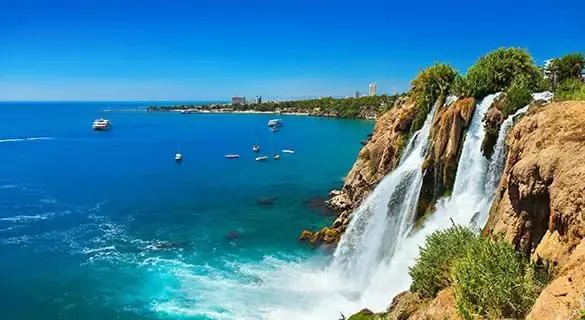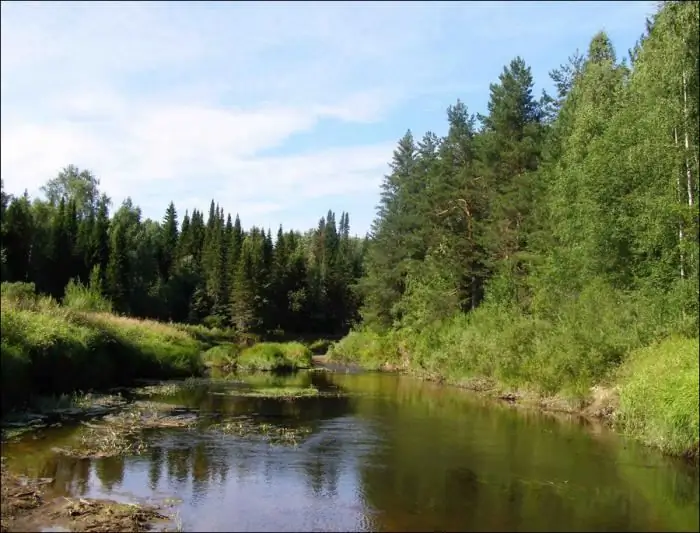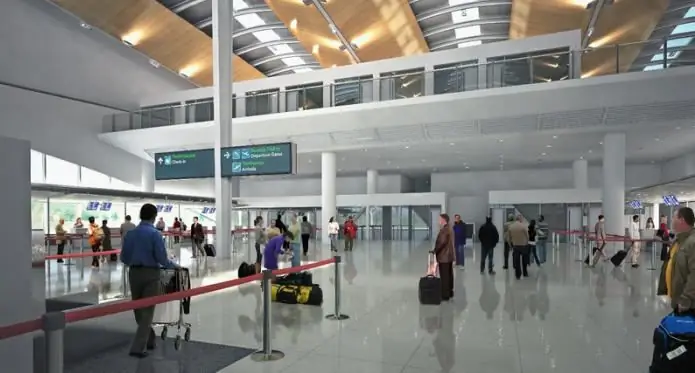- Author Harold Hamphrey [email protected].
- Public 2023-12-17 10:06.
- Last modified 2025-01-24 11:10.
At the moment it is considered that there are 41 historical cities in Russia. Nizhny Novgorod occupies a special place among them. The Kremlin of this city is one of the most beautiful and majestic among the preserved sights and attracts thousands of tourists, including from abroad.

History of foundation and construction
Since ancient times, fortifications were erected on the territory of Ancient Russia, which protected cities from enemy attacks. No wonder the Scandinavians called our country Gardarika. One such fortification, built in the 14th century, was the Nizhny Novgorod Kremlin, which was originally made of earth and wood.
Under Ivan the Third, in 1500, the first stone tower, called Tverskaya, was laid to strengthen the city's defense capability. Due to the raid of the Horde, it was possible to complete the construction only in 1505, and when 8 years later the oak Kremlin burned down, the architect Pietro Francesco was invited to Nizhny Novgorod. It was this Italian who created powerful fortifications, which todayamaze the guests of the city.
The new Kremlin was built from limestone tufa mined downstream of the Volga and oversized red bricks produced locally.

Description of the fortress
The Kremlin (Nizhny Novgorod) had a 2-kilometer wall and 13 towers. Of these, 5 rectangular were passable and 8 were round, deaf. In addition, there was a small stone bridge with a diversion tower in front of the Dmitrovskaya Tower.
The fortress was surrounded by a waterless moat 25-30 m wide and 2.5-4 m deep. Experts suggest that the moat in the area of the Dmitrov Tower had separate sections that were filled with groundwater.
Armaments and garrison
Nothing is known about the artillery of the fortress in the 16th century. However, evidence has been preserved that in the middle of the 17th century the garrison was armed with only 20 guns, since after the capture of Kazan by Ivan the Terrible in 1552, the military and defensive significance of the Nizhny Novgorod Kremlin decreased significantly. For the most part, these were small-caliber squeaks of a small outfit. There were also mattresses - small guns that fire shot. In addition, other firearms were also used - squeaks-gakovnitsy.

Kremlin (Nizhny Novgorod): history
Throughout the 16th century, the fortress was repeatedly besieged, but the enemy never managed to raise their banners over it.
In the 17th century, the Kremlin became the place where the meeting took place, culminating in the organization of the Secondmilitia that saved Russia and ended the Time of Troubles.
In the 18th century, the fortress was used as the residence of the governor. Under Catherine II, the dilapidated Kremlin was restored. However, the work done only worsened the condition of the building. Even more destructive were the attempts to save the fortifications, undertaken in 1834-1837. In particular, after the moat was filled in, the height of the Kremlin decreased by 4 m and the lower tiers were underground. As a result, they were flooded with groundwater and began to gradually collapse. In the 19th century, the Kremlin (Nizhny Novgorod) became the place from where militia went to the Patriotic War, who, faithful to the memory of their grandfathers, showed themselves to be brave warriors.

Foundation of the museum
Under Alexander the Third, there was a fashion for everything Russian and an interest in national history. In 1894, it was decided to organize a historical museum in the Kremlin. To do this, they decided to remake the Dmitrievskaya Tower. Upon completion of work in 1896, the museum was opened to the public. In order to deliver visitors to the Nizhny Novgorod Kremlin (Nizhny Novgorod), the photo of which is presented below, in 1896 a funicular was built from the side of Rozhdestvenskaya Street. However, in 1926 it was closed, as the operation of the tram line along the Zelensky congress began. It connected Bolshaya Pokrovskaya Street with Rozhdestvenskaya Street.
Under Soviet rule (until 1945)
After the October Revolution, like the whole country, big changes befell Nizhny Novgorod. The Kremlin has lostits famous Transfiguration Cathedral, which had no place in the city renamed in honor of Maxim Gorky.
In the place of the ancient temple built by Mikhail Romanov and Archbishop Filaret in the 17th century, the new authorities built the House of Soviets, and the museum that operated in the Dmitrievskaya Tower was closed. A plan was also developed to destroy some of the towers in order to expand Soviet Square, but the plans were thwarted by the Great Patriotic War.
From 1941 to 1943, the Nazis began to bombard Nizhny Novgorod from the air. The Kremlin, which at that time was more than 4 centuries old, came to the defense of its native city. Anti-aircraft guns were placed on its towers, which protected the sky over Gorky.

In the post-war period
At the end of the Second World War, near the walls of the ancient Kremlin, on Sovetskaya Square (Minin and Pozharsky), a Victory Parade was held, and since 1949 the fortress was restored. 31 years later, an exhibition of weapons from the time of the struggle against the fascist invaders opened on the territory of the Kremlin.
Since the beginning of the 1990s, the lack of funding has led to a complete cessation of restoration work. They continued only in the 2000s. In the same period, in order to preserve the sights for future generations, a Historical and Architectural Reserve was organized in Nizhny Novgorod, the basis of which is the Kremlin.
Of the events of recent years, it should be noted the reconstruction of the Zachatskaya Tower, which was carried out in 2012. As a result of construction work, the ring of the Kremlin walls closed, andthe architectural ensemble has acquired a complete look.
What tourists will see in Nizhny Novgorod today
Today the city is one of the most important tourist centers in the region. Numerous attractions annually attract thousands of tourists to Nizhny Novgorod. The Kremlin is the most important of them. Among the monuments preserved on its territory, 13 towers can be noted, viewing each of which will bring great pleasure to architecture lovers. In addition, there are the City Duma, the prosecutor's office, the arbitration court, the main registry office, the post office, the philharmonic society, the art museum, the guardhouse and the eternal flame. Also located there: an alley of love, several cafes and other interesting objects.
Nizhny Novgorod, the Kremlin: how to get there
The fortress is located at the confluence of the Oka and Volga, on a high cape. Those who arrived in the city by rail can get from the Moscow railway station to the Kremlin by using fixed-route taxis N 34, 81, 134, 54 or 172 to the Minin and Pozharsky Square stop. Then you should go along the pedestrian street - Bolshaya Pokrovskaya.

Other attractions
What else can you see if you are lucky enough to get to Nizhny Novgorod? The Kremlin is surrounded by interesting historical and architectural monuments that you can also see. For example, on Minin and Pozharsky Square, located on the southeast side of the fortress walls, there is a copy of the famous Moscow monument erected in honor of the heroes. Nearby are also the museum of A. S. Pushkin, a fountain builtin 1847, monuments to V. Chkalov and Kuzma Minin. The latter is known for being installed during the war years in order to raise the morale of Nizhny Novgorod residents during the days of intense air raids on the city.
Now you know what attracts tourists to Nizhny Novgorod. The Kremlin (see photo above) deserves to be seen and filled with pride in the deeds of our ancestors.






